Xiaomi has been associated with affordable, quality smartphones for years. This is also true for the high-end models, although the price difference compared to the competition is not as big as it was a few years ago. The manufacturer focuses on quality and the incorporation of fresh improvements, but these components are not cheap. Quality and durable materials, high end components, licenses, are all expensive, but the margin remains low, oddly compared to competing manufacturers.
The Mi 9 has everything a high-end smartphone should have today, but the price tag remains friendly. Especially at the time of publishing this test. Not to mention that the tight margins mean that the price doesn't drop as much as the competition after 1-2 months, which is why it's a good investment to buy a Xiaomi Mi series smartphone.
In a year, the manufacturer has raised the quality of its camera improvements to such a level that it has already managed to squeeze the top of the field with this year's first flagship, which costs one and a half to twice as much as the Mi 9. The fact is that it hasn't got as many options in settings and effects as Huawei or Samsung, for example, but the AI algorithm can replace them (the essence is in the MIUI camera).
Let's see what Xiaomi has in store for the first half of 2019.

Of course, the best way to compare the Mi 8 with the Mi 8 is to see how much the manufacturer has improved in just 11 months.
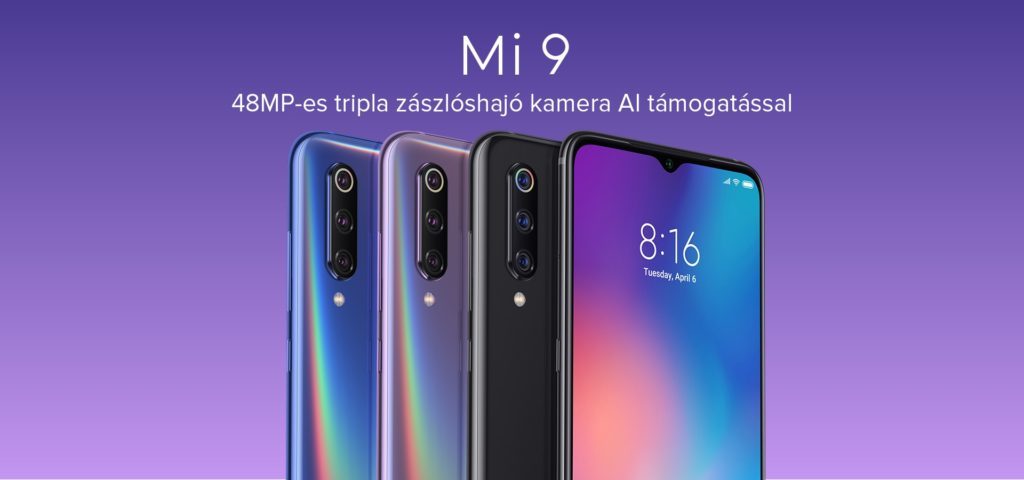
The Mi 9 Global version has been officially available for over a month now, but I've been using the Chinese 8GB RAM version, which was available first, for two months. Meanwhile, its little brother, the Mi 9 SE, has also arrived, and I'll highlight the differences in this test.
Year after year, the design is stunning, with the edges designed with comfort in mind. The better the phone fits in the palm of your hand, the more you want to use it. Fortunately, the increase in display size has been cleverly solved, with hardly any increase in physical size, while the proportion of usable display has already increased significantly.
| Wed 8 | Wed 9 | |
| Height | 154,9 mm | 157,5 mm |
| Width | 74,8 mm | 74,67 mm |
| Thickness | 7,6 mm | 7,61 mm |
| Weight | 175g | 173g |
| Display size | 6,21″ | 6,39″ |
| Display-to-body ratio | 86,68% | 90,7% |
Not a compact size, it is designed in line with Asian trends. And the Chinese people want cupcake phones. It's almost impossible to use with one hand, but the stunning display and brutal performance make you willing to compromise. If not, there's the Mi 9 SE.
Forget one-handed typing on public transport, the strap-on backplate below is a must-have accessory.
I started using the predecessor, the Mi 8, as soon as it became available, so I have a benchmark. Compared to the previous Mi 3, it's a huge phone (but with a much larger usable surface area due to the smaller bezels, and a relatively larger physical size), but it took weeks to get used to. It still fits comfortably in a pocket, and consuming content is a real pleasure. I don't have big hands, so it's not an impossible undertaking to use with compromises, but not in one hand.
The Mi 9 has a more rounded shape with thinner sides. At its thinnest point it's just 3.5mm, which is noticeable in the grip. It fits better in the palm of the hand and the weight distribution is ideal and comfortable. The back is glass, but it's not noticeable at first. Somehow the feel of Gorilla Glass 6 is different, or it's the design. Of course, it doesn't feel like plastic, and it's not so slippery. The included clear silicone case doesn't detract from the look, and even through it the phone looks stunning.
 The back of the Mi 9 SE is flat, without the curvature of the Mi 9, and the glass is an earlier development, Gorilla Glass 5 on the front and back.
The back of the Mi 9 SE is flat, without the curvature of the Mi 9, and the glass is an earlier development, Gorilla Glass 5 on the front and back.
I received the ocean blue version, which is the most beautiful blue of the Mi series so far. Even the Mi 6 wasn't an ugly blue colour, but the gold frame was too much for me.
The Mi 9 is made using a special holographic painting process, where the painting under the glass is made to look like a rainbow, or Aura-like colour transition, as soon as it is exposed to light. So it's not just one colour, but a complete range of colours depending on the angle of incidence of the light. I can't get enough of it after all this time.
The metal frame is painted in normal blue and has a glossy lacquer finish. There's full symmetry at the bottom, a Type-C QC4+ connector - insulated inside - supporting 27W wired charging in the middle, and a 5-5 hole grid on either side. The left of these houses the speech microphone, the right the mono speaker. Moving towards the corners, there are also 1-1 antenna strips, complemented by another on the top right edge, eliminating the risk of signal reception problems.
On the right, you get the usual power and volume control buttons, with the Power button right between them, and the volume control button on the right, which requires a reach/grasp. On the left side, however, we find a dedicated AI button, a solution not previously used on the Mi series. The height of this is on the same level as the Power button, so you can reach it with your middle or index finger. The AI button first debuted on the Mi MIX 3, and the function is identical. On the Chinese handset, XiaoAI can be brought out and a few conveniences (cards) by long pressing the button, in the Global version we only get Google Assistant, which I haven't really used so far. Fortunately, some more useful things can be programmed from the button menu, so I long pressed it to set the Reader mode and double pressed it to start the camera.
The AI button seems to me to be completely unnecessary, especially since if you're not looking at the phone you can confuse it with the Power button, so you often start Google Assistant unintentionally.
Staying on the left side, the top edge has the SIM tray, also insulated, which holds a double nanoSIM. At the top, the secondary (noise cancelling) microphone is almost in the middle, and to the right of it is an infra port. It's good to see this option back after the Mi 6. You can use it for TV, air conditioning, or any of your infrared devices. Although it's not teachable, there are plenty of apps for it in the Play store.
Contents of the box:
The Mi 9 comes with the usual accessories:
- QC 3.0 EU charger head (18W output) - my copy came with a Chinese head
- USB-C cable
- jack adapter
- SIM pin
- silicone case
- English leaflet
Although the Mi 9 supports wireless charging, a charging pad is not included in the package, it's currently the privilege of the MI MIX 3.
If you can't stand the factory silicone case, you can opt for a factory hard case (also with straps) and sacrifice the visual design on the back.
The edge of the factory silicone case doesn't reach the display plane on top, and it doesn't protrude on the sides, so gesture control is not impeded. In return, it is firmly fixed to the body of the phone (not so much after a month of use and a few cleanings), but it offers minimal protection against dropping the phone on the display. It can be used to protect against slipping, but if you want to protect your phone from being dropped, choose one of the factory plastic cases.
Since the Mi 8, Xiaomi has put its trust in Samsung's AMOLED panels, so after the Mi 8 and Mi MIX 3, the Mi 9 / Mi 9 SE pair also uses this technology.
The FHD+ resolution (2340 x 1080) and 403 PPI pixel density are plenty even for a 6.39″ screen. The brightness is normally 600 nit, which can be increased to 800 nit for a shorter time in daylight mode with the light sensor. The viewing angle is almost infinite, there is no inversion and no significant brightness loss (light leakage, banding, yellowing). This isn't the latest development from Samsung, as the S10 already reads 1000-1200 nits brightness. But for a price range like this, it's plenty. Although we haven't had too many sunny days so far when we needed the high brightness, it proved to be sufficient. The minimum brightness has also improved a lot, and at the lowest setting it's not bothersome when waking up in the evening or staying in total darkness for extended periods.
You can also use the automatic dimmer (I rarely use it, because indoors it sometimes takes the brightness down unnecessarily). You can set the night mode separately, and you can adjust the colour temperature separately for day and night mode. It can also be activated from the Reader Mode menu, the quick toggle bar, or by programming the AI button. It can also be scheduled for any time, and there is a "Read Before Sleep" function that is activated after sunset.
Contrast can be adjusted in three levels (Auto, Enhanced, and Normal modes), colour temperature in three levels (Default, Warm, and Cool calibrations), and individually. Around the same time as the Mi 9 Global was launched, "Dark Mode" was also made available in MIUI, so you can take advantage of the AMOLED's economy mode without installing an external theme, which can hide the minimal drop notch, among other things, if the background image is also dark.
Staying with the notch, it's also worth highlighting the shortcoming that comes with the reduction in size.
This is the omission of the infra LED. I missed this for two reasons. While I'm not the target audience for artistic selfie photography, the infrared illumination experienced on the Mi 8 in total darkness allowed for low-light selfies there. With the Mi 9, however, the only thing you could count on is the display flash in the absence of an LED flash, if such an option existed. The other, more relevant feature for me, is infrared face unlock in the dark.
Here, it is not possible to unlock the phone in total darkness using your face data, because the 20MP Sony sensor with 0.9μm pixels and f/2.0 aperture so that if you want to read messages on your phone after you've gone to bed, or if you've forgotten to check something, you can just use the built-in fingerprint reader (or the traditional PIN and passcode unlock) when the screen is locked.
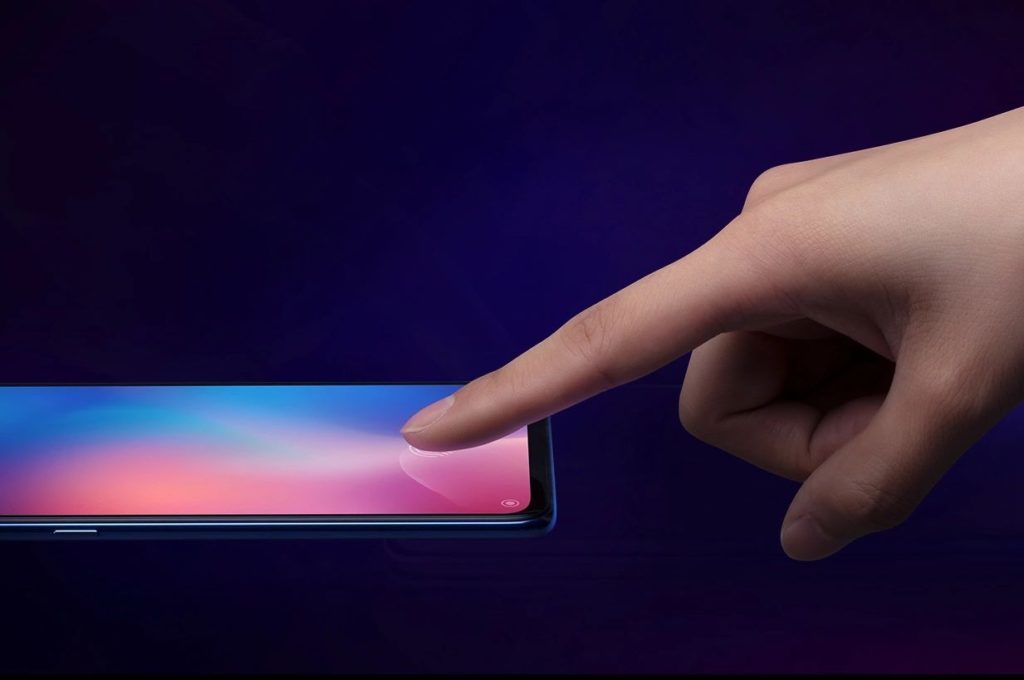
The in-display fingerprint reader exploded onto the market in 2018, with the optical sensor-based technology first seen on the Mi 8 Pro and second on the Mi 9 this year. The technology itself has gone through several generations of development in six months, with the Mi 9 now using the 5th generation. In the absence of infrared face unlock, we can only use it in the dark if we don't want to draw a PIN or pattern on the display to unlock it. On Mi 8 Pro, it was not at all impressive to use, its speed lagged behind the traditional backside solution. It's not any faster this time either, but the accuracy of detection has improved a lot. I have drier skin, and as a result, fingerprints are quite difficult to detect, which can be a problem even for those who work in construction or as a climber. If we lose our unique biometric identifier, the problems with such a technology can be magnified. Fortunately, it's not that bad in my case, I have 6 backups for 4 fingers stored in the system, so it's almost flawless.
On the top right of the display, the Mi 9 has a white notification LED, which has unfortunately been completely removed on the Mi 9 SE. So the display is perfectly fine, neither the image refresh nor the higher brightness is missing. For those who want more from a Xaomi phone, or who might want to do a lot of gaming, the Black Shark 2 might be a better choice, if only because of the pressure-sensitive display.
I am very used to gesture control, and the display is a partner in this. Backspacing from the side edges works quite well, but the thin bottom cavity and the large size mean that pulling up from the bottom and typing on the Space requires more care and attention. On the one hand, the phone can easily slip out of your hand like soap in the event of a wrong grip, and on the other hand, there are many times when you hit the wrong button or react incorrectly, and the Google search engine can be activated unintentionally.
When used in parallel with the Mi 8, you can feel the difference in size, and for me, the slightly thicker bottom coffee on the Mi 8 is more comfortable to use.
I haven't tried the Gorilla Glass 6 protection yet, so I couldn't compare the same economy as the Mi 9 SE (which has GG5 glass, like the Mi 8) in terms of scratch or impact resistance.
In terms of hardware, the Mi 9 is absolutely top of the range.® The Snapdragon™ 855 8-core processor is this year's best, using Kyro 485 architecture on 7nm manufacturing technology with 1 super large core at 2.84 GHz, 3 large cores at 2.42 GHz and 4 small cores at 1.80 GHz. The increased CPU performance is 45%, and the efficiency is 40% compared to its predecessor. The GPU is also the Adreno™ bull with model number 640, which beats its predecessor by 20% and has an efficiency of over 25%.
The Mi 9 was the first to feature Vulkan 1.1 support on the GPU, and it's no coincidence that it performs so well (1st place in DxOMark) in benchmarks and in real-world use.
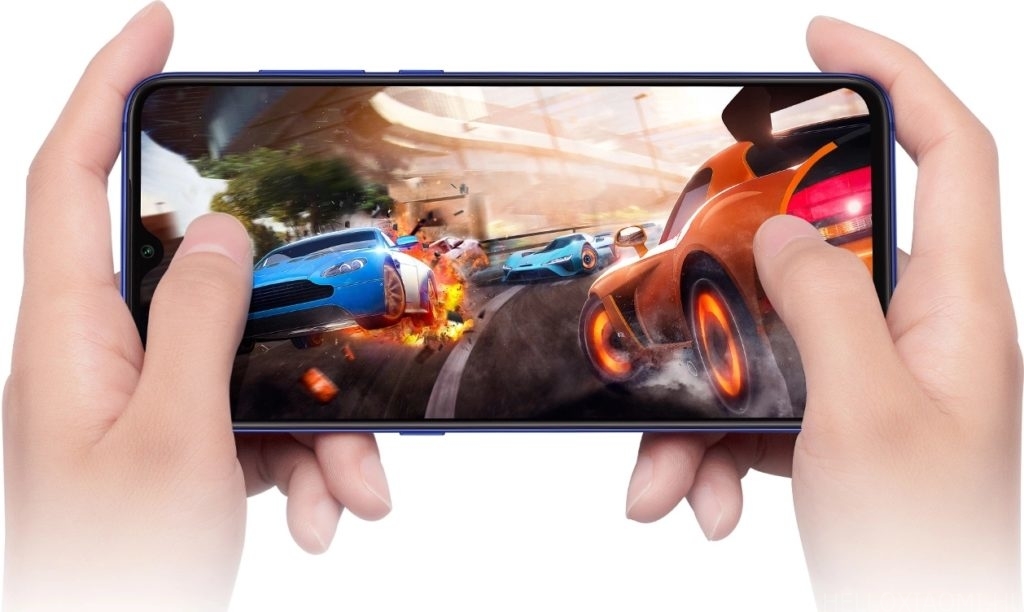
Other special features of the GPU include film-level post-processing with improved compression, processing of shadows, and true HDR display driven by AIE's 7th generation processor with 3 times more powerful AI.
March measurement
It runs titles like PUBG or Iron Blade on max settings. There are no problems with hours of gaming, no unpleasant heating, the glass back and the proper heat dissipation prevent excessive heat generation around the SoC.
The games are optimised for proper game play with MIUI Game Turbo optimisation and notification management.
There are hardware differences between the Global and Chinese versions. While the Global variant is currently available with 6GB LPDDR4x memory and 64/128GB UFS2.1 back, the Chinese variant is available with 8-12GB LPDDR4x RAM and 128-256GB UFS2.1 back. The Alita variant has 12GB RAM + 256GB back, which is almost impossible to get even in China. The Global version of the Transparent Edition is still on hold, and we can expect to see it in the summer at the earliest, if the manufacturer plans to release it.
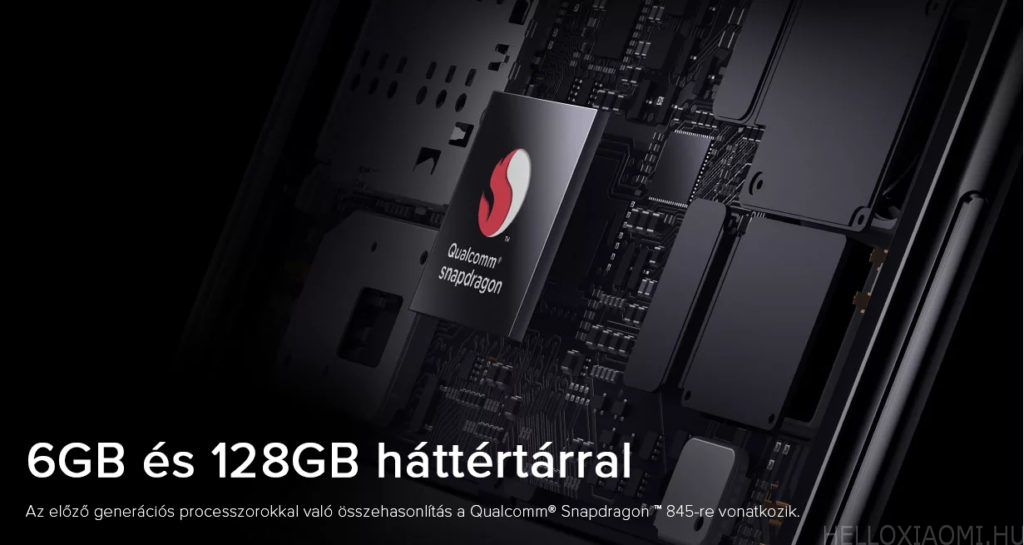
I'm using the 8+128GB version, without 800MHz 4G LTE frequency support (B20), with Global Beta ROM. I have not experienced any disadvantages with the Chinese version, except of course in rural areas 4G space 3G speed. The extra 2GB of RAM, and the CE marking and crossed out dustbin symbol free back cover are only positives. There's a spare to keep it running, and the obligatory marking doesn't spoil the beautiful back cover.
MIUI10
I wouldn't write about MIUI10 itself, as MIUI11 is coming soon (the beta testing period has started). But I would like to mention the new features in Mi 9 in a few lines:
- one such, and long-awaited option is the "Dark mode", which was the first to be featured in the Global ruin, Mi 9. It's only of real use on AMOLED displays, but it doesn't look bad on IPS and it's not too hard on the eyes in the dark. Nearly 100% of MIUI has been optimised for dark mode, so white backgrounds are rare, mostly in developer mode.
- extended AOD function on a closed screen: for years, Samsung, which also manufactures AMOLED displays, has made good use of the alternating placement of notifications and the clock on a closed screen, Always on display (Environmental display) mode. That means the frugal organic display in standby mode can now show not only the time and date, but also notification icons for multiple apps and, most recently, battery charge when enabled. The number of clock themes has been increased from the initial 1-2 available on Mi 8/MI 8 Pro/ Mi MIX 2s/ Mi MIX 3 - with the latest Global Beta update of Mi 9 - to 16.
Mi 9 also has its own theme, with sand dunes that darken according to the time of day. This is quite spectacular, complemented by the Moon animated AOD clock that is used as default. - The camera app has also been revamped, with some grid tweaking to make it easier to switch between the 3 camera angles, and there's also a Moon mode in the 10x digital zoom function.
- New charging animation: in visual terms, the animation is clearly beautiful, with bright AMOLED colours, and a wired version and, in the case of Mi 9, a wireless version.
Now we come to one of the most important innovations, the triple camera unit. Following the trends of this year (but not copying the sensor solutions of Huawei Mate series 4 or Nokia 9), Xiaomi has built 3 cameras into the Mi 9 / Mi 9 SE pair. The camera unit, with different sensor resolutions and varying angles of view and brightness, guarantees the user the best image and video quality ever.
Key features of the Mi 9 camera:
- Above the Phone sensor: 12MP 1/3.4-inch Samsung S5K3M5 sensor with 1.0µm pixels, f/2.2 aperture lens, 50mm focal length
- Alatta PDAF/laser autofocus
- In the middle is the Primary sensor: 48MP 1/2-inch Sony IMX586 quad sensor, 0.8 µm pixels, f/1.75 aperture (6P) lens, 26mm equivalent focal length
- And below the Super-wide-angle sensor: 16MP 1/3-inch Sony IMX481 sensor, f/2.2 aperture lens, 17mm focal length (117° angle of view).
- the double (monochrome) LED flash is located separately under the camera unit
- Capture video at up to 2160p (4K) at 60fps (default mode 2160p / 30fps)
The main sensor captures image information on a 1/2″ 48 MP sensor that produces 12MP output images.
The upper unit (telephoto module) with its 12MP sensor provides 2x zoom, while the lower 16MP super-wide-angle sensor (117° angle) is responsible for panoramic landscapes and close-up (macro) photos.The autofocus system uses a mix of PDAF, laser and contrast detection. This is very rare, and the first time Xiaomi has supported all of these modes simultaneously.
Based on the current (end of May) DxOMark results, the Mi 9 is ranked 4th, pushed down by Samsung and Honor models following its release.
The camera on the Mi 9 SE is slightly different:
The main (primary) sensor is the same, but the telephoto and super-wide-angle lenses are different in brightness, number of lenses, and the type and resolution of the sensor underneath.
In the table below, I've tried to gather all the information about the Mi 8, Mi 9, and Mi 9 SE cameras. As you can see, there are some similarities, but the camera units differ in several points:
| Wed 8 | Wed 9 | Mi 9 SE | |
|---|---|---|---|
| Primary sensor | |||
| Resolution | 12MP | 48MP | 48MP |
| Sensor type | Sony IMX363 | Sony IMX586 | Sony IMX586 |
| Sensor size | 1/2.55″ | 1/2″ | 1/2″ |
| Pixel size | 1.4µm | 1.6µm (4 in 1) | 1.6µm (4 in 1) |
| Brightness | f/1.8 | f/1.75 | f/1.75 |
| Focal length | 21mm | 26mm | 26mm |
| Number of lenses | – | 6P | 6P |
| Phone sensor | |||
| Resolution | 12MP | 12MP | 8MP |
| Sensor type | Samsung S5K3M3 | Samsung S5K3M5 | – |
| Sensor size | 1/3,4″ | 1/3,6″ | – |
| Pixel size | 1.0µm | 1.0µm | 1.12µm |
| Brightness | f/2.4 | f/2.2 | f/2.4 |
| Focal length | – | 50mm | – |
| Number of lenses | – | 6P | 5P |
| Super-wide-angle sensor | |||
| Resolution | no 3. camera module | 16MP | 13MP |
| Sensor type | Sony IMX481 | – | |
| Sensor size | 1/3″ | – | |
| Pixel size | 1.0µm | 1.12µm | |
| Brightness | f/2.2 | f/2.4 | |
| Focal length | 17mm (4cm macro) | – | |
| Number of lenses | 6P | 5P | |
| DxOMark score | Average: 99 Photo: 105 Video: 88 | Average: 107 Photo: 112 Video: 99 | not measured |
| Stabilisation | OIS (4-axis optical) | EIS (electronic) | EIS (electronic) |
| Focus mode | PDAF | laser, contrast, PDAF | PDAF |
| Selfie camera | |||
| Resolution | 20MP | 20MP | 20MP |
| Sensor type | Samsung S5K3T1 | Sony IMX576 | Sony IMX576 |
| Sensor size | 1/3.1″ | 1/2″ | 1/2″ |
| Pixel size | 0.900µm | 0.900µm | 0.900µm |
| Brightness | f/2.0 | f/2.0 | f/2.0 |
| Focal length | 18mm | 18mm | 18mm |
In the case of the Mi 9 SE, I found scant information about the two secondary camera modules, and the manufacturer of the sensors is not known.
Image quality
There's no doubt that the Mi 9 is the best Xiaomi smartphone with the best camera and image quality ever. Video quality is particularly outstanding, with the best score in the first DxOMark measurements. In use, I was absolutely impressed. The speed of focus, image processing and sound quality make it suitable for serious work. Especially after a couple of MIUI updates, which really got the electronic stabilisation working during video. Although I would have preferred an optical solution, I can't complain about the EIS.
Both the superb hardware and the constantly improving AI algorithm play an active role in processing the images. There are no theme modes, the AI does everything for you. If that's not to your liking, you can also use the manual modes in limited mode. The white balance is perfect, maybe a little purple. The active AI and HDR rendering is flawless for the most part, but there were some interesting situations that I attribute to the developer's ruin. What I did experience was excessive contrast and overdoing of HDR, which resulted in an abstract graphic rather than a photo. There were 1-2 of these, which I was lucky enough to delete, so I can't show you.
The triple focus mode may be unique on the market, but it's certainly unique at Xiaomi. The laser focus speeds up the focusing noticeably, so it has produced hardly any lifeless photos over the last few months. HDR is sometimes too strong and should be used infrequently. However, this is controlled by the AI itself, there are times when it's too much.
Obviously a matter of taste, but it can be switched off. But you can't control the levels.
When taking a photo, you can set the flash (Off, Auto, On, Lamp mode), HDR (Off, Auto, On), AI (Off/On), there are basic colour effects, and your own AI Beauty.
AI beauty is no longer just about face retouching and virtual makeup, but also about Body Slimming, Leg Slimming, head shape control, waist carve and shoulder height control. The slider retouching modes are thankfully not overpowering, but they can also be used to create a new person.
In photo and video mode, the switch between the three viewing angles has been renewed, with a dot indicating the other two units when the current sensor is used.
You can see the full Camera setup repertoire in the video below:
Video - EIS
His video skills are perhaps best illustrated in the video below. It really shows that it can be used for work, even if you don't have a serious MILC or dSLR to hand.
At the time the video was shot, EIS was not really usable, and a gimbal is not bad for optimal effects, so the video was captured in it. By the way, the gimbal is made by Mijia.
A few weeks later, however, it unexpectedly improved:
Moreover, the short video was shot in 4K/30fps.
What 9 photos during the day
There is basically no problem with the picture quality. The white balance is perfect, HDR and AI work well in the vast majority of cases, there's no overexposure and there's enough detail in the shadows. Sometimes more than you would see with the naked eye. However, 48MP resolution doesn't mean it produces the detail of today's dSLRs, as both the sensor and lens sizes are a fraction of the size of even an APS-C sensor camera, and a good brightness lens. Line sharpness, as I mentioned earlier, is sometimes too much, but thanks to excellent noise reduction, there's little noise to be detected, while still retaining enough detail.
The 2x zoom sensor has a lower brightness and the image quality is not as good as the main sensor, but it can still produce a decent image in the dark, as long as you don't zoom in on the final photo.
The images below show the details at 3x and 5x magnifications:
What 9 photos of the evening
The evening photos were taken earlier, I took them the evening I took possession of the device (6 March). It performed surprisingly well, the sharpness of the lines is a bit over the top for me, but for a mobile phone to take such a picture....Kudos to Xiaomi's engineers. Sony has a fantastic sensor and Xiaomi engineers have written an algorithm for it.
See all photos in full size here (many more than you see in the test)
Summary
The Mi 9 is a great smartphone, no doubt about it. The camera is very well done, the video quality is amazing, the software is snappy. Despite its large size, the rounded design compensates excellently, with curves for ergonomic use. True, the thinning edges and glass casing make the use of the supplied silicone case a necessity. Care must be taken with it, because although the GG6 protection resists scratches well, it can't withstand a major fall. Replacing the Amoled display and the integrated fingerprint reader unit is an expensive affair, costing 60% of the purchase price.
The waterdrop notch is not distracting, and the 20MP selfie camera inside brings the quality of the Mi 8.
Hardware-wise, it's got a bull SoC, NFC, and 27W wired and 20W inductive charging support. The audio experience is identical to the Mi 8, I didn't notice any changes on the speaker.
The battery life could probably be better, and the reduced capacity compared to its predecessor is evident in everyday use. In nearly 3 months of use, it failed 1-2 times from 8am to 8pm, but then it was also pretty skinned. With average usage between 35-50% the battery lasts for 21 hours, which is not bad.
If you use one of the fast charging options, or have a Qi pad in your car, you'll have plenty of battery power for those jams in Budapest. The dual GPS produced almost the same result as the Mi 8, i.e. you have to wait a few seconds for an accurate location, but its accuracy of roughly 5-10 meters shows our position well. Sometimes it takes a while to refresh, and the Waze servers are not so nimble to show the current position immediately after retrieving it from memory.
The AI button is rather confusing for me, it's hard to get used to its usefulness, to this day I forget to use the two preset functions from here.
The built-in fingerprint sensor in the display is quite fast, but rarely fails to detect properly. I miss the infrared face unlock, in the dark if you don't keep your face close to it, identification doesn't work.
MIUI10 includes a number of useful features, making it better to use with every update.
If the average update schedule of stable roms is too slow for you, feel free to switch to developers (Beta), it worked for me.
It's not necessarily worth switching from Mi 8, just like Mi MIX 3, only change if you find it heavy or thick.
Overall, the Mi 9 is a highly recommended device, especially with the 128GB version being very reasonably priced.
The Mi 9 is available at xiaomishop.hu assured, thank you.
According to here Mi 9 models available to buy now Global with Hungarian menu, EU charger, B20 (800MHz 4G LTE frequency band) support, 24 months with Hungarian guarantee.


















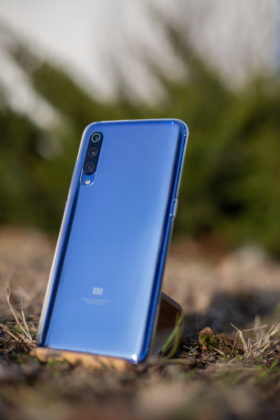
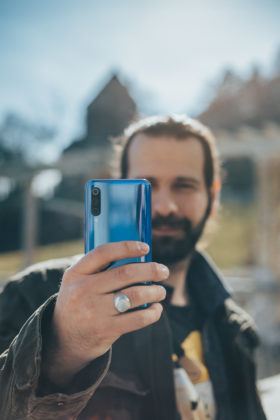
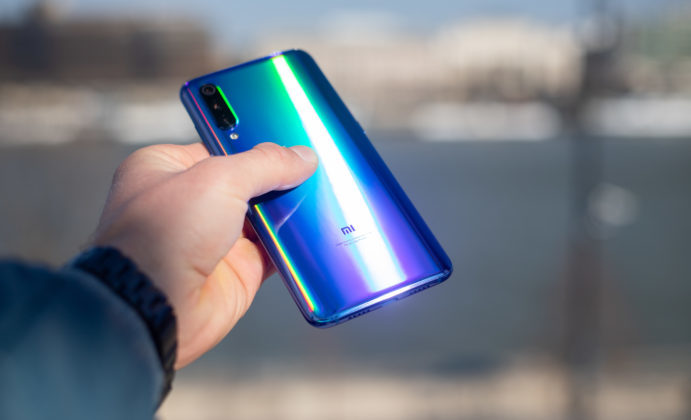
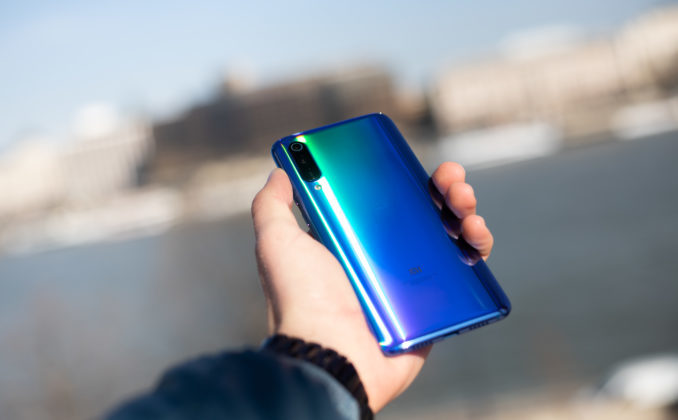
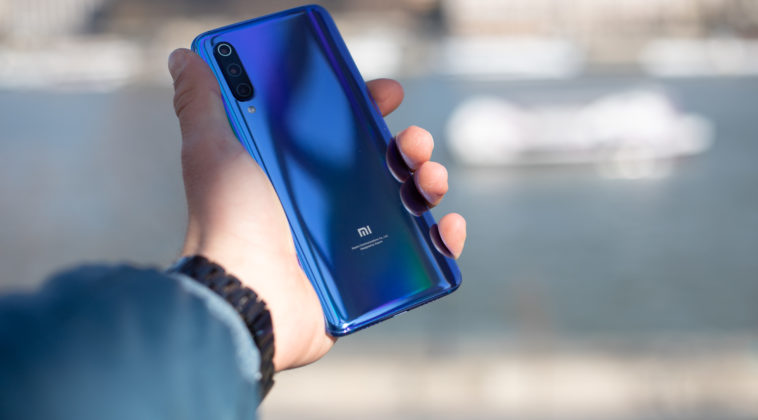
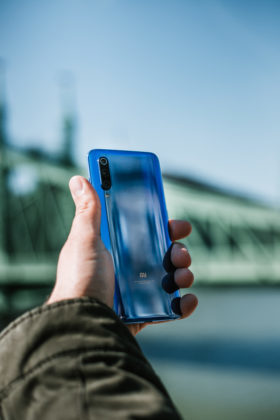

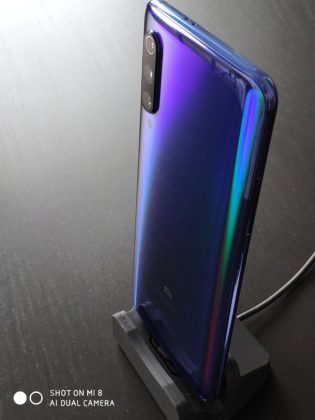
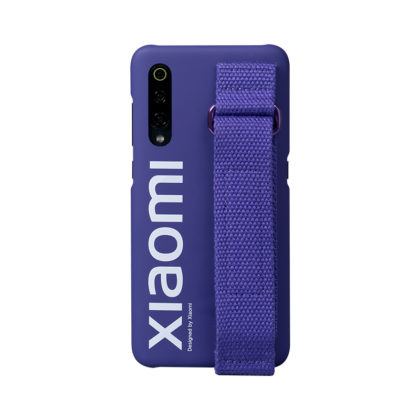

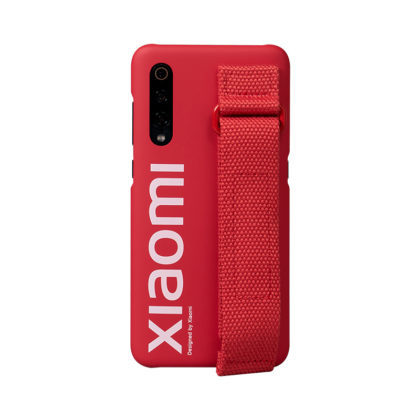
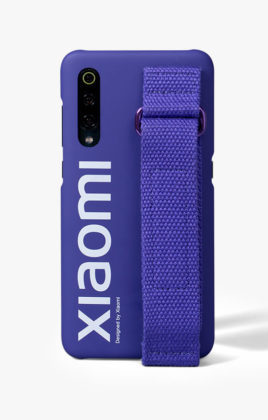

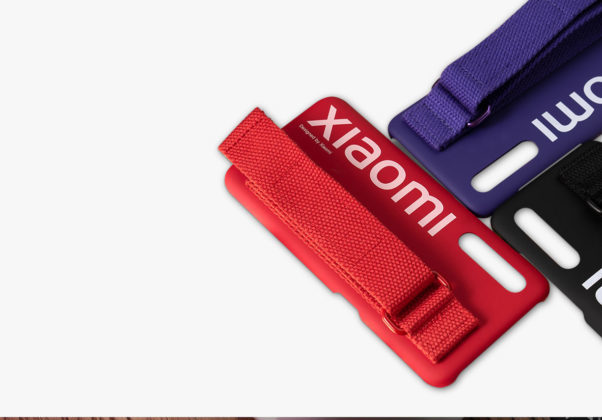
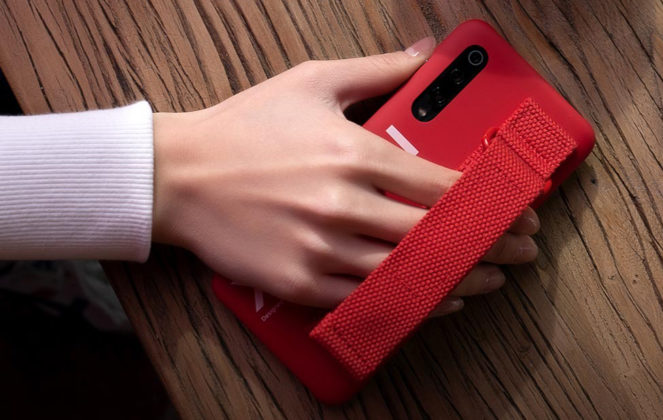
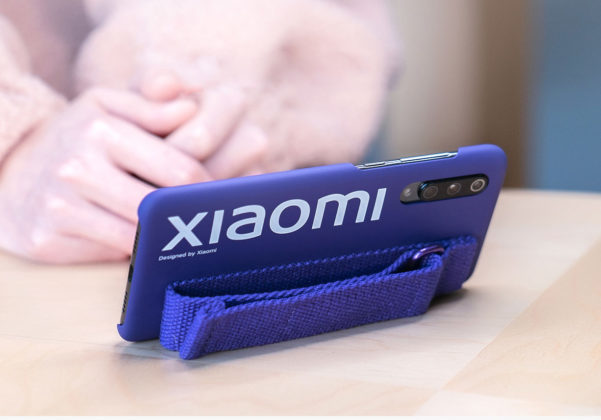

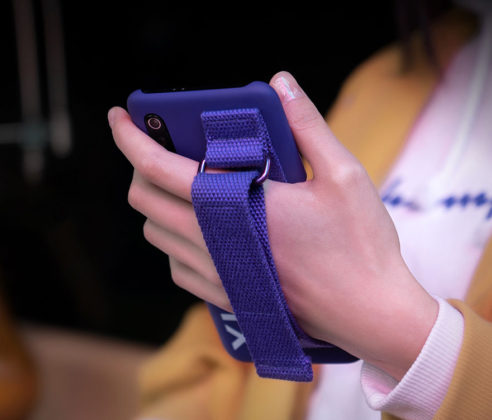


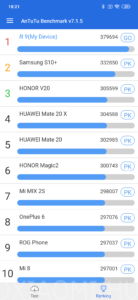





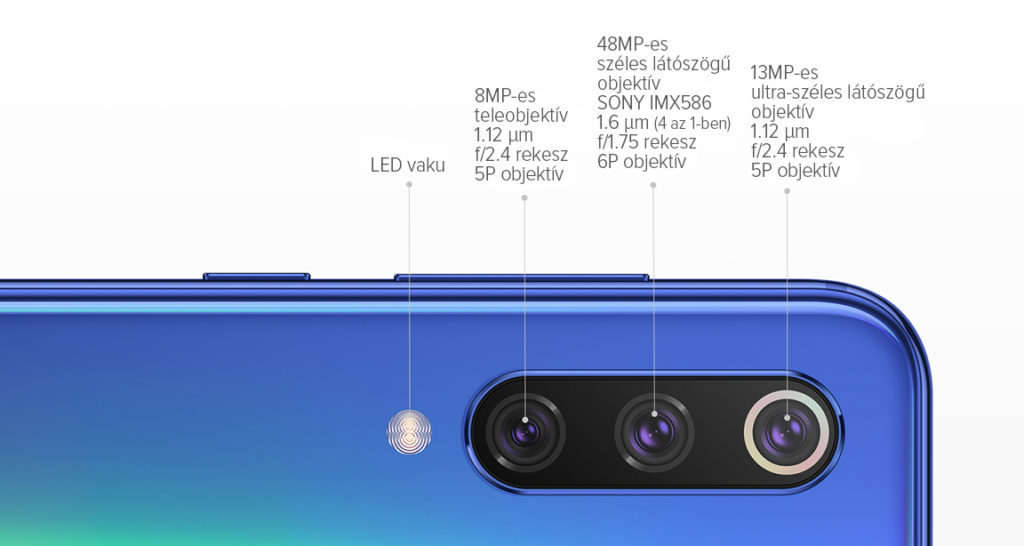
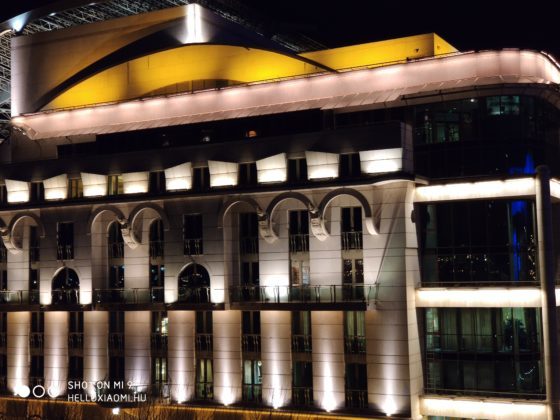
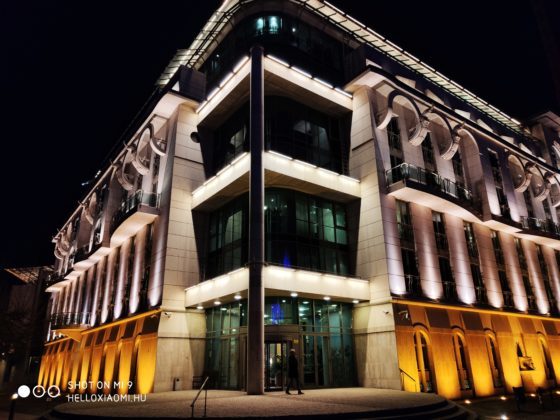
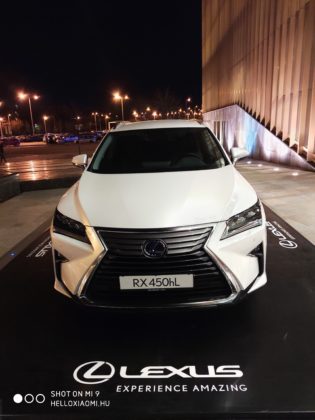
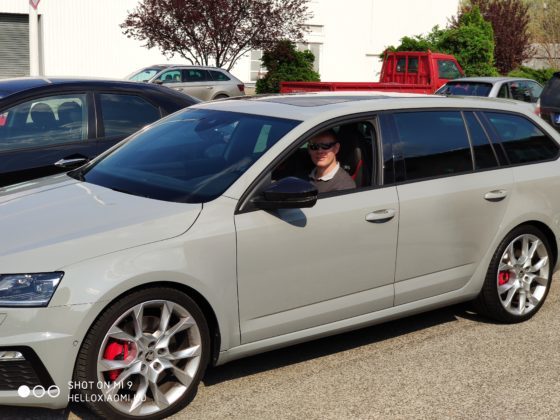
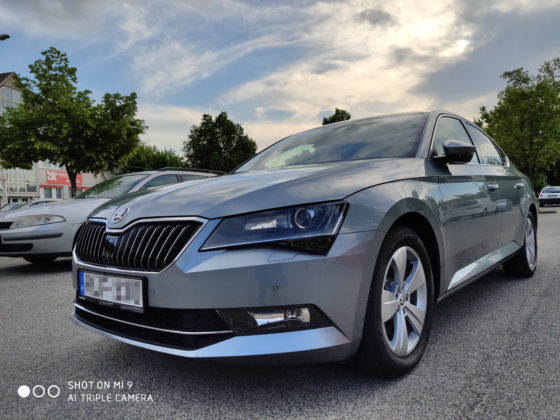













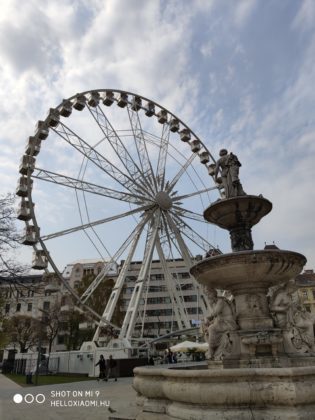

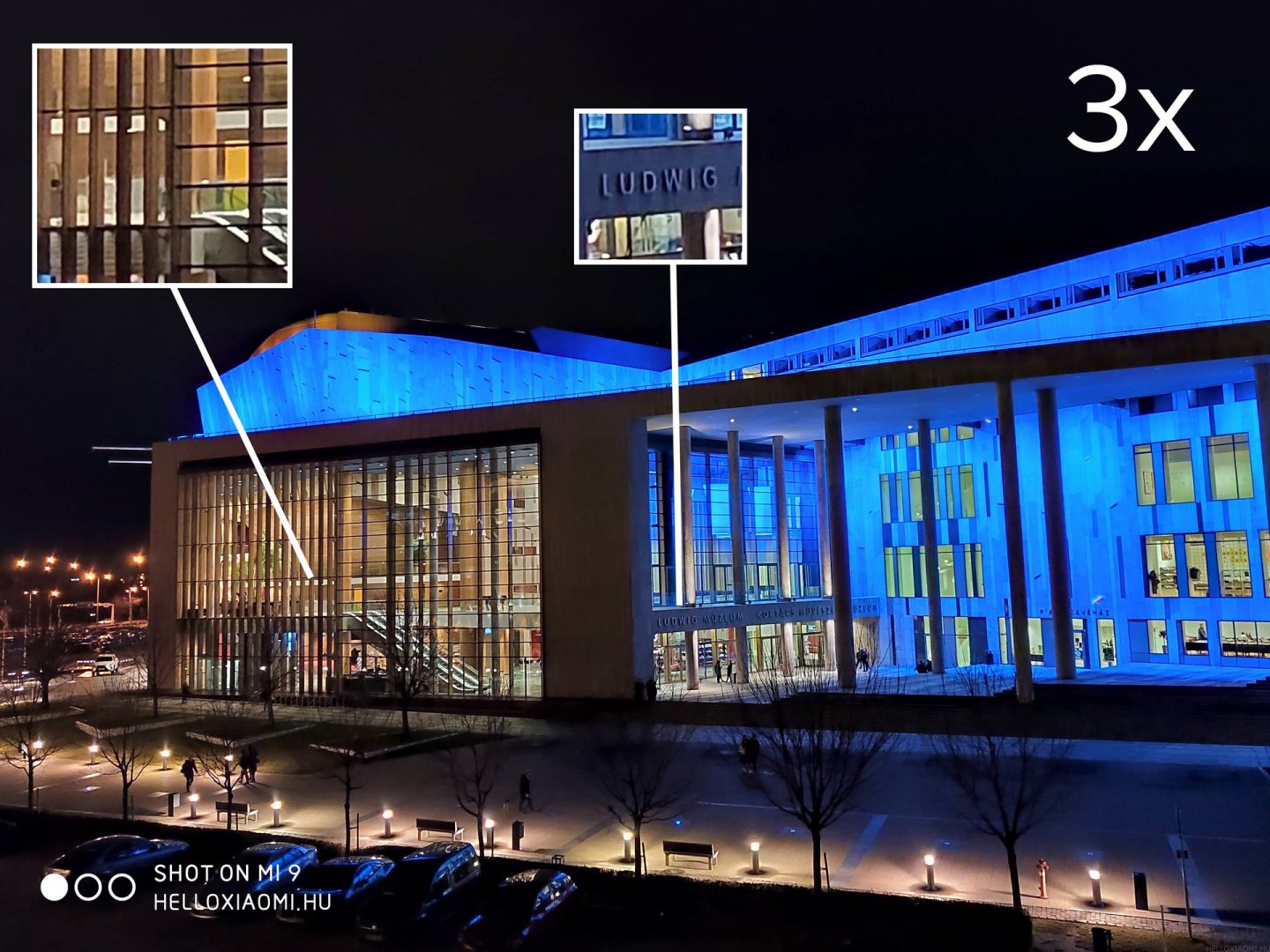
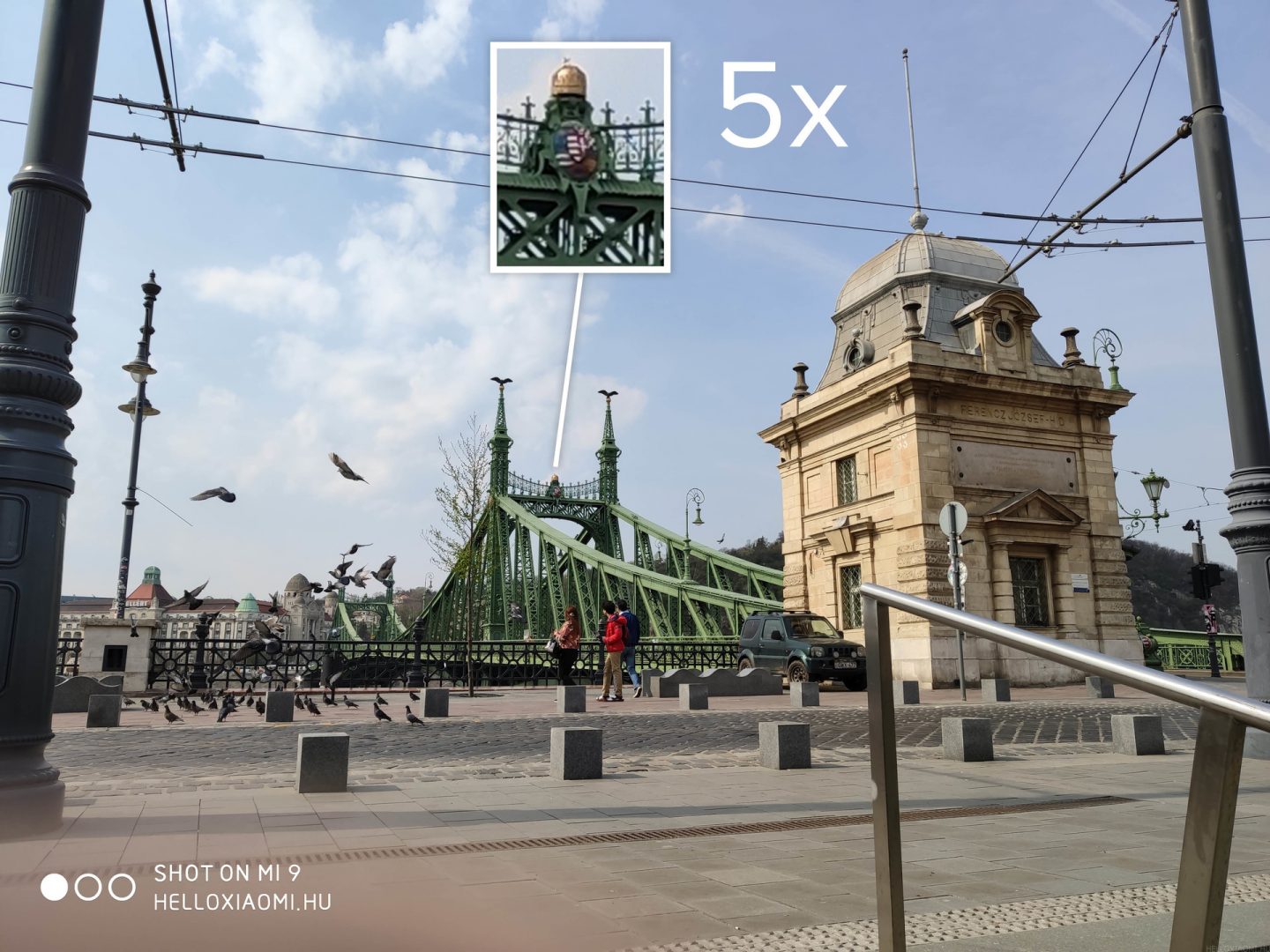
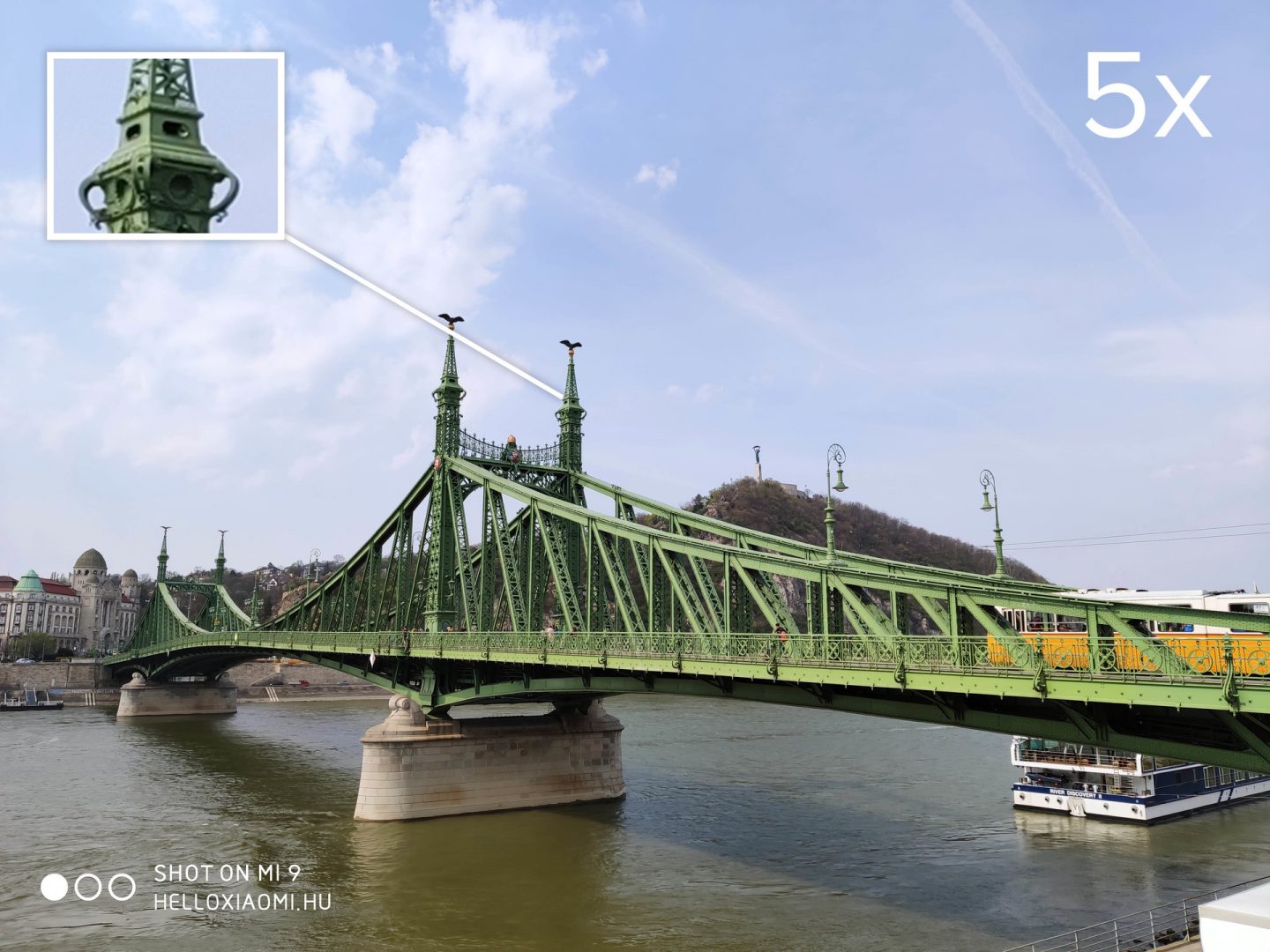
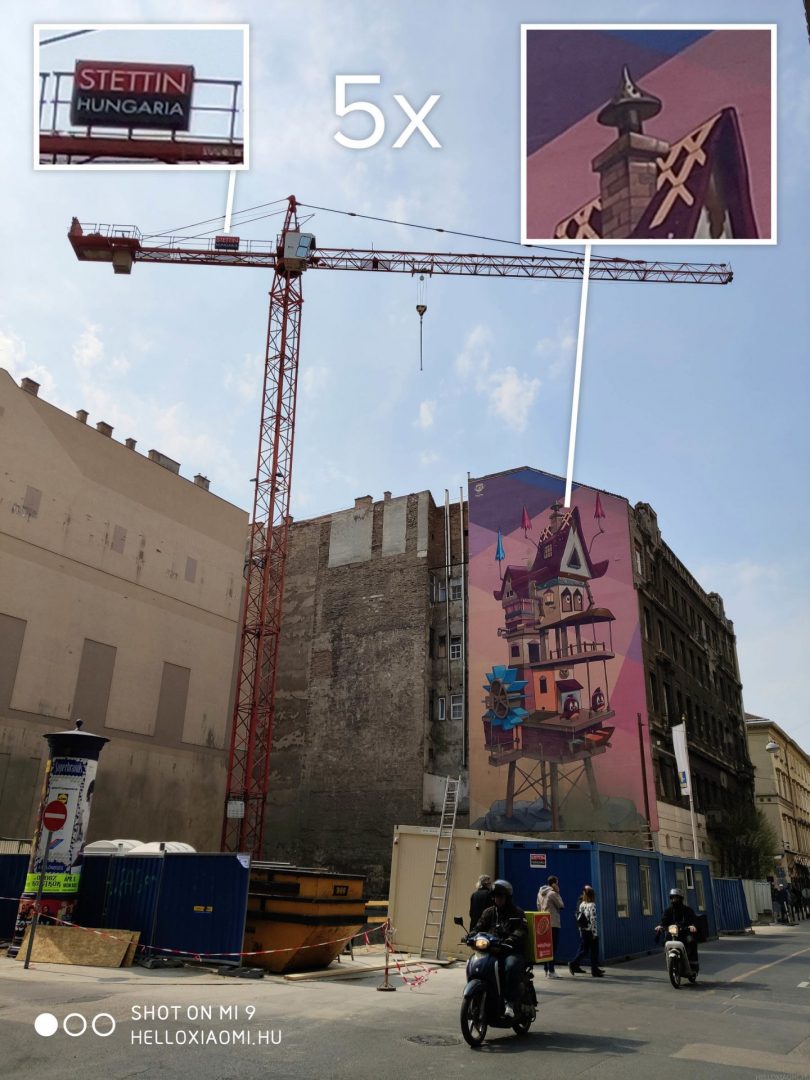
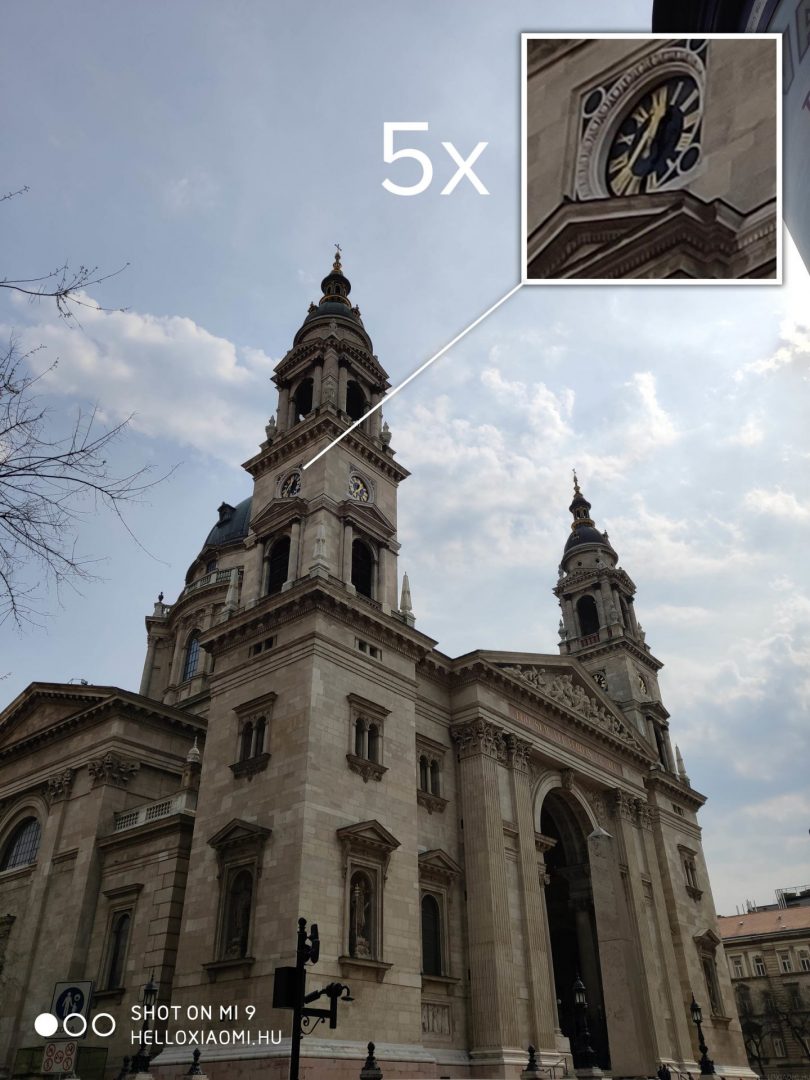
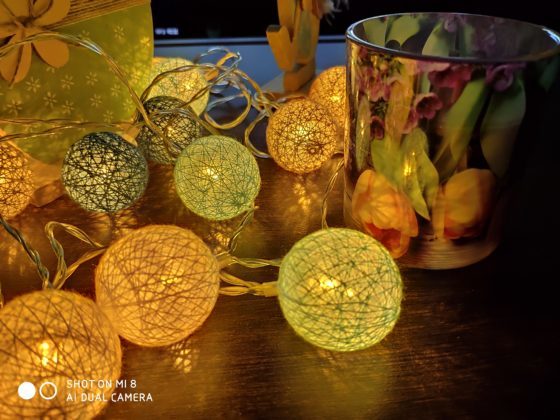







![[151] HyperOS heti hibajelentés](https://helloxiaomi.hu/wp-content/uploads/2024/04/hyperosbugreportindex-218x150.webp)




You must be logged in to post a comment.